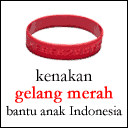Learn about it
Swimming classes can be a fun experience to share with your baby and with other parent-baby pairs. The term “class” in this context shouldn’t mean that your baby will “learn” anything. Until a child is over four years old, any swim program should be viewed as simply a pleasurable way to introduce your baby to the fun of being in the water.
At what age can you take a baby in a pool?
As long as the water and weather are warm enough, you can take any baby over a few weeks old into a pool while in your arms. The younger the baby, of course, the more closely you’ll need to monitor the reaction to the water, and the more careful you’ll need to be about the chill that can occur when wet skin hits cooler air. Keep in mind that your baby will chill before you do, and if your baby is shivering or his lips look blue, he should have been out of the water some time ago. Quickly wrap him up and warm him.
How can I make our swimming experience safe?
The one most important rule for swimming with a young baby is to always keep him in your arms when he’s in or near the water. Always.
How can I help my baby enjoy his first swimming experiences?
When taking your baby for a swim, make sure he isn’t hungry or tired so that he and you can both enjoy the water. Avoid taking a swim immediately after your baby has been fed. Very young babies don’t really need any floats or swimming aids, since they will not be out of your arms at any time (right?). If you decide to let your older baby float around in a baby boat or swim ring, always keep in mind that these are not designed for safety or protection; you should keep your hands and eyes on your baby at all times. Follow your baby’s lead. If he seems happy and curious, then move him around in the water. If he seems nervous or frightened, don’t push him beyond his comfort zone. Some babies take time to warm up to the idea of a big body of water, even if they love to splash in the bathtub at home. You may even find that your baby takes numerous trips to the pool or beach before he’s even willing to get wet. Be patient!
How do I choose a class?
Ideally, look for an instructor who has knowledge of child development in addition to swimming. A teacher like this can gear the class activities to the proper developmental abilities of the babies in the group. It’s important to work with a teacher who understands children and can be sensitive to a baby’s fear or uncertainty of the water, and who doesn’t expect a baby to do more than what he is comfortable doing ¾ even if that means just dangling his feet in the water for the first few lessons, or even just looking at it from a deck chair!
What should your baby wear?
At the beach, your baby can wear a diaper, a bathing suit, or a birthday suit ¾ whatever you and he are comfortable with. Many parents keep their babies in a t-shirt to protect against the sun. If your baby is a walker, you might want to invest in some aqua socks to protect little feet against sand, rocks, and shells and to prevent slipping while walking poolside. If you are in a pool, disposable or reusable swim diapers are a great option. These don’t swell up like a sponge, but they do retain the unmentionables that other swimmers would rather not see floating in the water!
Protect your baby from the sun and chemicals
If your swimming extravaganza is taking place outside, be certain that you protect your baby from the sun with a hat and (if the baby is older than six months) sunscreen. This is very important, since the sun’s rays are magnified when reflected off the water. Be cautious about emerging your baby in a pool that has a high level of chlorine as this may irritate his delicate skin.
Après swim
Remember, just like you, your baby will probably be ravenous after a swim so plan to feed him soon after you’re out of the water. A breastfeed, bottle-feed or snack will keep your baby happy. And a snuggly feed after a swim is extra warm and cozy for both mom and baby.
An important warning
No matter how many swim classes your baby has had, and no matter what his comfort and skill levels while in the water are, and no matter what kind of swimming float he is wearing, you should never, ever leave your baby unattended while in or near water ¾ not for even a second. Babies are unpredictable. They easily can fall into the water and drown even in water just a few inches deep. Swimming lessons for babies have nothing whatsoever to do with reducing the risk of water hazards. As a matter of fact, they can increase the risk of water accidents when parents are lulled into thinking their baby is safer because he has had swimming lessons ¾ which is not the case. Plus, swimming lessons, if they are successful, dispel your baby’s natural wariness about water and make it more likely that he’ll explore on his own if given but a second. You are many years away from watching your child swim independently while you sit on the beach in a lounge chair.
babbies online







